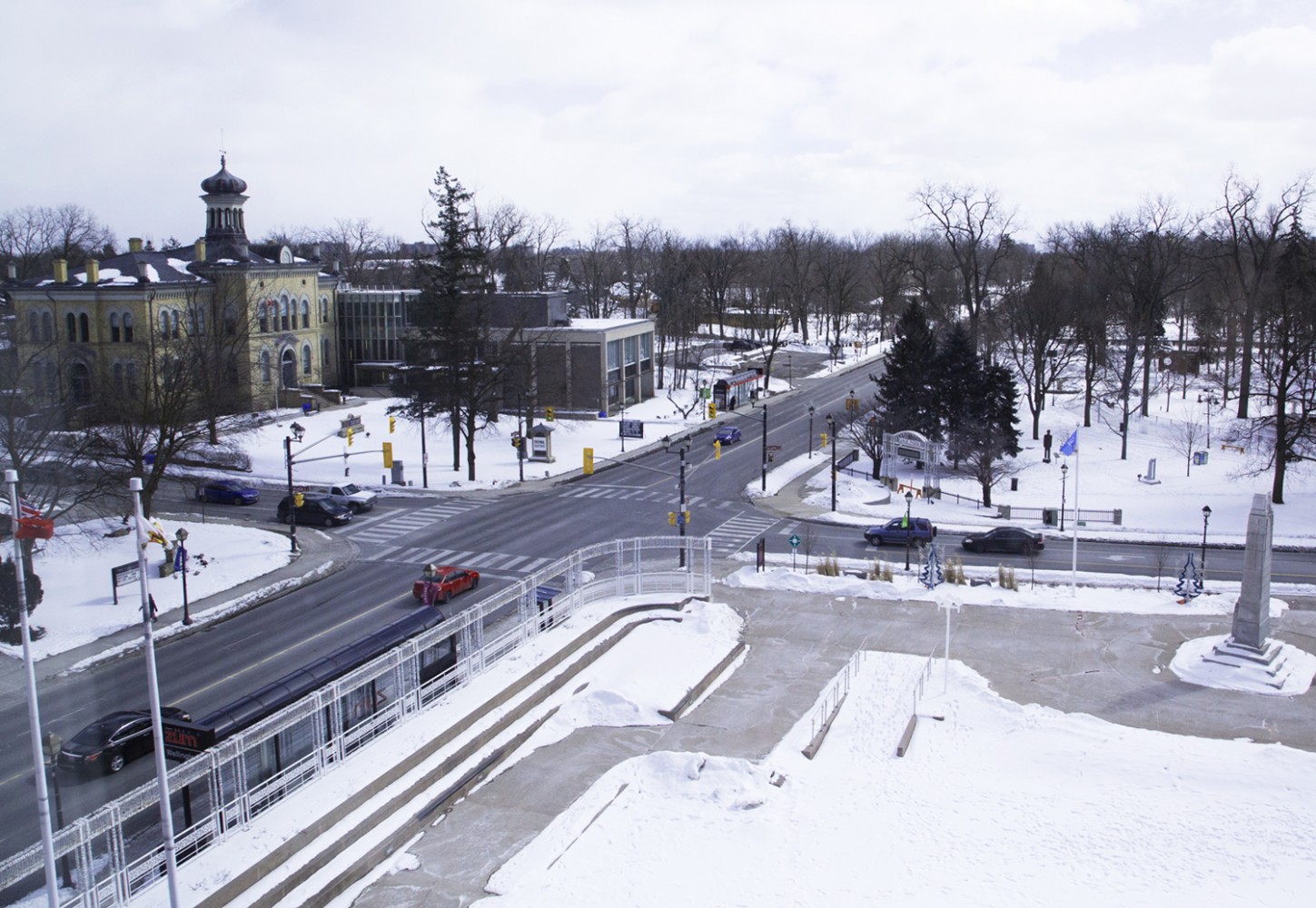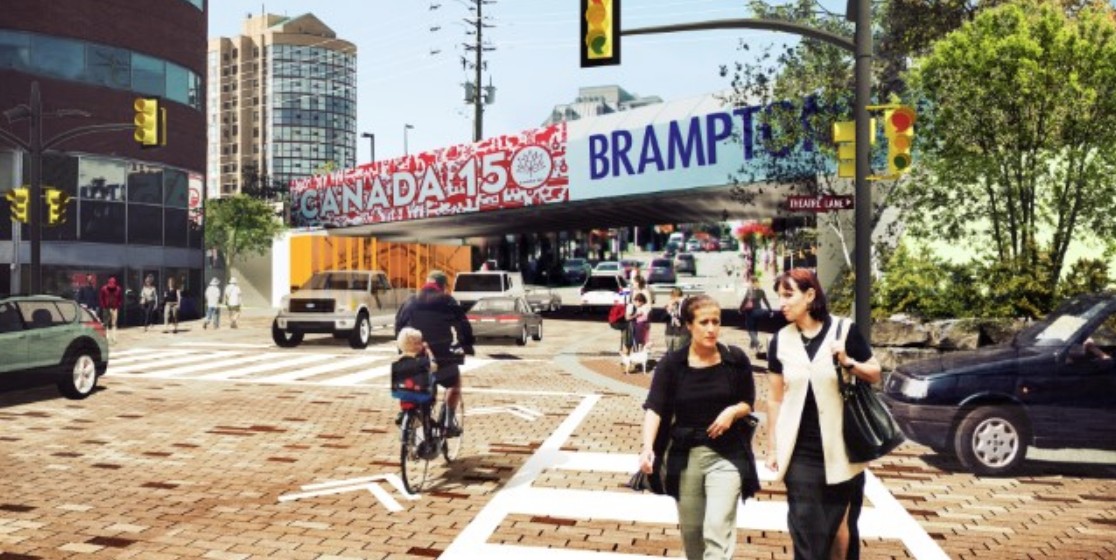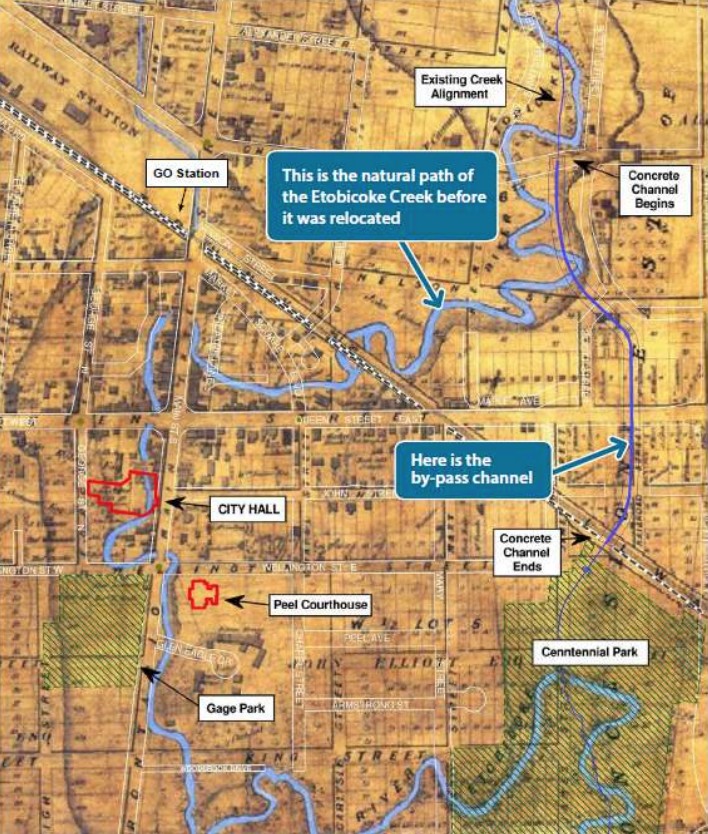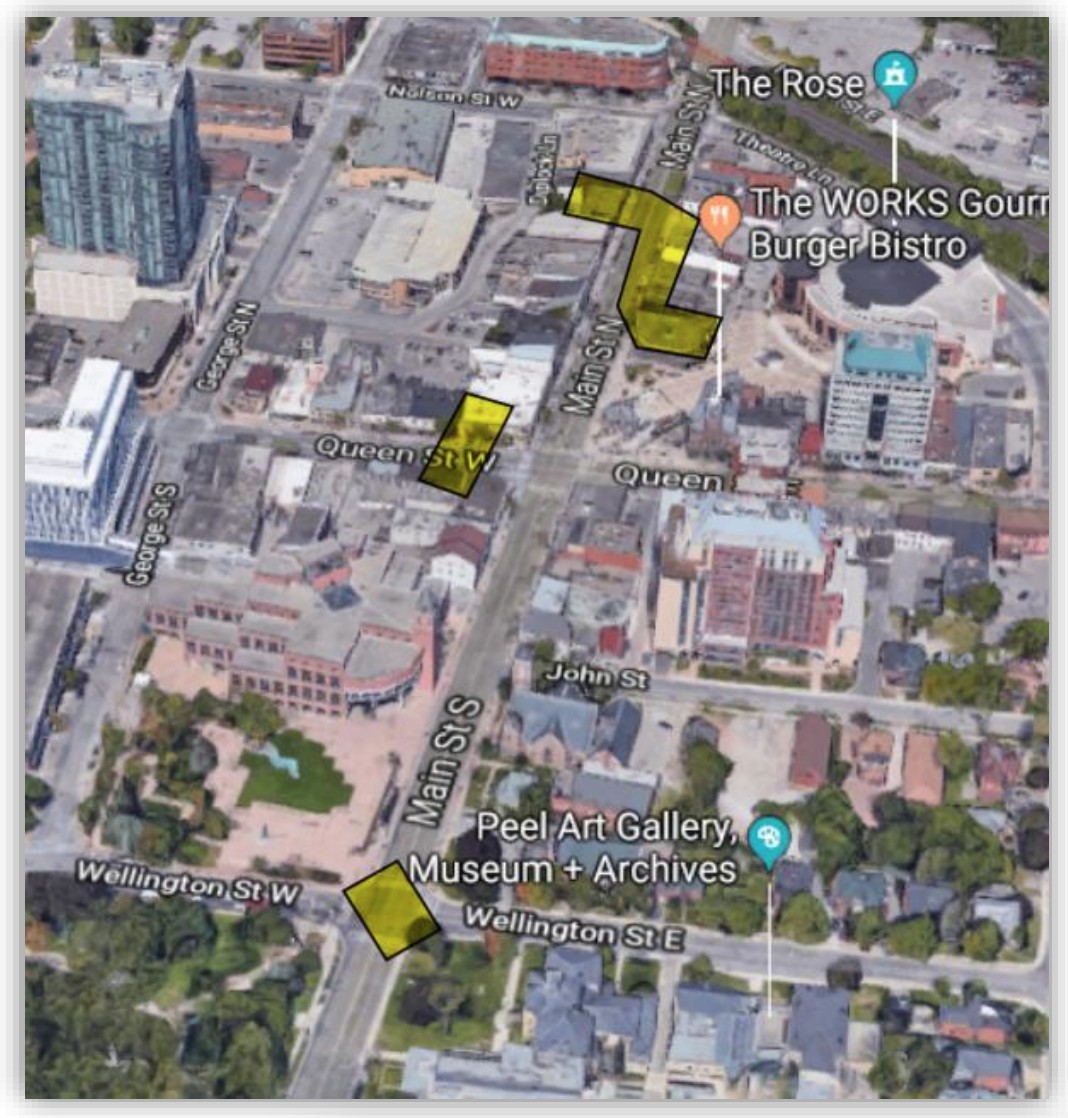
What danger lurks beneath Brampton’s downtown? Months later, we still don’t know
If asked to point to examples of Brampton’s built history, most residents would probably turn their gaze toward a couple of obvious examples: the old city hall building near Garden Square— which now houses a Starbucks—or the city’s former jail and courthouse, now home to the Peel Art Gallery, Museum and Archives.
But municipal officials have been revisiting a lesser known part of Brampton’s history with growing concern. About a foot to two feet underneath the downtown is a series of concrete channels built to bury the old course of Etobicoke Creek, and which could now be posing a significant danger to the structural integrity of downtown streets.
Specific records of when the original channels were built are hard to come by, but there’s a 19th century photo showing a partially built wooden channel near where city hall’s atrium is now. Even in their more recently updated concrete state, they’re likely to be in disrepair.
Last December—seeing that council had opted to re-explore a Main Street alignment for the proposed light rail line—the city’s director of capital works, Jayne Holmes, recommended that city council, either partially or fully, pause the Downtown Reimagined project to conduct a proper investigation of the long ignored channels.

Brampton's Downtown Reimagined project envisions a series of streetscape improvements and modernizations for the downtown core.
The unknown condition of the underground channels—and unknown costs associated with ensuring their structural integrity—conflicted with the revitalization project, which involved replacement and repair of water and sewer lines beneath downtown, a Peel Region responsibility, in tandem with the city’s own revitalization of the downtown streetscape, including wider sidewalks, amenities like bike lanes and a generally beautified downtown.
“We heard lots of anecdotal stories about the tunnels, but we were never sure where they were and what condition they were in,” Holmes told council in December.
She continued: “There is not a lot of historical information that is available. We did find some evidence that there was remedial work that was completed in the 1970s. But we didn’t have any record of any work that had been done since.”
In her presentation, Holmes revealed her staff’s concern that the tender for revitalizing the downtown could be more expensive than previously thought. The original price tag for the project was estimated to be in the neighbourhood of $23 million. Cancelled bids on the project, which ranged from $55 million to $73 million, could drive up the city’s contribution to as much as much as $45 million.
The uncertainty about the channels and an expanded mandate with the LRT proposal prompted the capital works division to ask that the initiative be put on hold. City council voted to halt the project entirely to give staff time to figure out its next moves.
Fast-forward to March. Holmes says her team has not learned much new information. “We haven’t actually been in the channel. We were trying to find out the location and condition of the channel as it pertains to the streetscape.”
“We’ve done some testing on some of the remnants that are there. So the concrete, for instance, looks like it’s in good shape. But we haven’t had a chance to fully expose anything because … we would have had to dig it up anyway” for the Downtown Reimagined project, Holmes told The Pointer.
Etobicoke Creek today runs parallel to downtown, flowing north to south, but that trajectory is a result of human intervention. Before that, the creek meandered through downtown, providing the area with a serene if not entirely benign feature for residents. Water from the creek was useful in days of yore because it allowed easy access to drinking water for both people and livestock. But that view and utility came with a price.

The natural path of Etobicoke Creek through Brampton's downtown.
The town was subject to numerous destructive floods, with the last major one— arguably the most devastating— being in 1948. The flood destroyed many of the storefronts in the Four Corners area and caused millions of dollars in damage.
“The idea of those tunnels was to take that rushing water and move it through that original creek route, but under the town to get the water flowing through without flooding,” local historian Steve Collie told The Pointer.
But the tunnels didn’t succeed. The spring thaw would often defeat the purpose of the tunnels and flooding would occur anyway. “The ice floes came down and they got stuck in the tunnels; and they blocked the tunnels. Once the water couldn’t get through the tunnels, it flooded up top,” Collie said.
“[The creek] actually used to come out of the back here,” Collie said while speaking with The Pointer, pointing towards the back of Segovia Coffee Co.
Sections of the creek that once meandered through the city, along with the channels, were buried and a concrete bypass channel was constructed so the creek would run in a straight line the way it does today. Brampton’s downtown was designated a floodplain, requiring two tiers of permits in order build in the area. That floodplain has been the bane of Brampton’s existence, helping to stifle development in the downtown area.
Chisholm and Associates, an engineering consulting firm, went inside and inspected the channels’ structural integrity in 1971. Their assessments raised the alarm of a potentially dangerous situation brewing beneath the shops of downtown.
“It is difficult to understand why at least some of the area has not collapsed,” reads the report unearthed from the PAMA archives. One rather alarming passage in the report describes how “heavy traffic was still using Main Street and very severe vibrations caused rust scale and concrete chips to fall within the tunnel” during their inspection.

Areas highlighted in yellow are thought to house underground channels only a few feet beneath the surface of the street.
Chisholm and Associates recommended that remedial action be taken on the channels, which included “corrective action.” It is not clear what sort of action was taken, but eight businesses on Main Street immediately north of Queen were designated as particularly vulnerable to “dangerous conditions” existing in their “flooring and support structure.” Segovia Coffee Co. is one of the businesses that have replaced those mentioned in the report.
The hope with Downtown Reimagined was to make the downtown’s streetscape an attractive locale for pedestrians, stimulating foot traffic and benefiting downtown businesses. The cancellation of the project means the money-making potential of the redesign has also been delayed. The initiative’s original estimated cost is listed as a debt obligation in the 2019 proposed budget document. Incurred costs are expected to be part of the 2021 budget, and a likely repayment plan is proposed in the document.
Email: [email protected]
Twitter: @mansoortanweer
Submit a correction about this story


